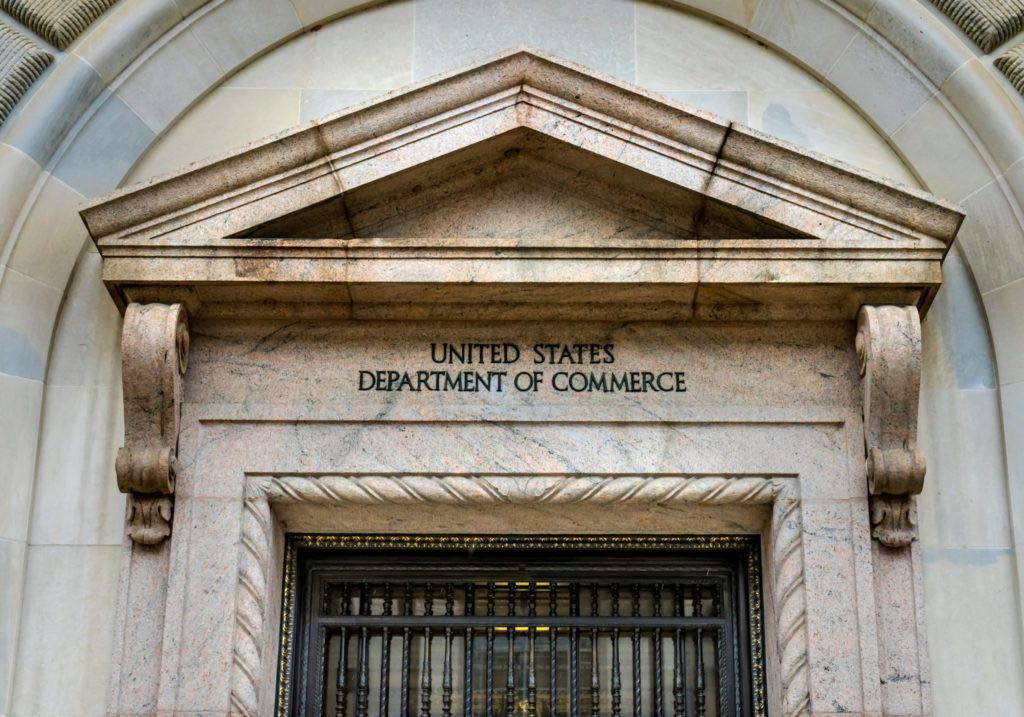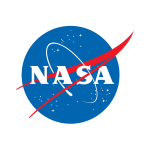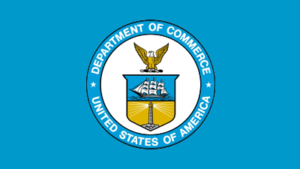
Remarks by Deputy Secretary of Commerce Don Graves at the Space Symposium
Apr 20, 2023
Remarks by Deputy Secretary of Commerce Don Graves at the Space Symposium
KCPullen@doc.gov
Wed, 04/19/2023 – 11:58
Cybersecurity
Space commerce
Weather and satellites
AS PREPARED FOR DELIVERY
Wednesday, April 19, 2023
Office of Public Affairs
publicaffairs@doc.gov
Don Graves
Thank you for that kind introduction, Tom, and thank you to the Space Foundation for inviting me to speak today.
I also want to thank Jodi Slattery and her great team for putting together this event and extend my gratitude to Macy Miller and the team at The Broadmoor for hosting us and putting together such a great show.
Before I dive into the meat of my speech, I want to remind folks of the continued brutality being meted out upon the brave people of Ukraine. And one of the most important roles we have at the Commerce Department right now is countering Putin’s unwarranted and brutal full-scale invasion of Ukraine.
Through export controls, which we have deployed alongside 38 of our partners and allies around the world, we are working to slow Russia’s ability to produce high-end products that have dual uses in both commercial and military technology. We will continue to restrict access to semiconductors, lasers, sensors and aerospace parts, and a range of other technologies, hobbling the Russian illegal war effort and reinforcing our support for Ukraine. Make no mistake, any country around the world that seeks to backfill the Russian war machine by supplying weapons or dual-use technologies to Russia, does so at their own peril.
It’s fitting that we’re here in Colorado, the nation’s second-largest aerospace economy. If you look at almost any aerospace project these days, chances are a Colorado company was involved.
Colorado is home to cutting-edge space exploration programs, four military commands, and multiple world-renowned research laboratories. That includes several Department of Commerce labs in Boulder, located on the campus of the David Skaggs Research Center.
And later this week, I’ll be visiting the NOAA Space Weather Prediction Center, the NIST Boulder Laboratories, and the Institute for Telecommunication Sciences, which is part of Commerce’s National Telecommunications and Information Administration (NTIA).
I’m so grateful to be at the Space Symposium alongside 15,000 people from around the world – exhibitors, educators, students, and volunteers.
The turnout reflects the global profile of the aerospace industry and the Space Symposium. It’s a demonstration of the strong, collaborative public-private partnerships that enable all of us to grow our economies and better understand our planet and the solar system.
Support for the Space Economy
Last year we saw 180 successful space launches into orbit – the most ever recorded, and 44 more than the previous year. 2023 promises to be just as active when it comes to space missions, launches, and the next steps in exploration. And for the Department of Commerce, in particular, we are looking forward to the launch of GOES-U next April from Cape Canaveral.
Indeed, we are achieving remarkable progress in the space sector, with support from businesses that continue to create new ways to make space more commercially accessible.
Take Astrobotic, headquartered in Pittsburgh. Their facility will support the first lander to fly under the Artemis program and is slated to use its Peregrine lunar lander to get 11 science and exploration instruments to the lunar surface this year.
These commercial, robotic missions to the moon will drive technological development that brings us closer to NASA’s planned 2024 human moon landing.
President Biden and Vice President Harris have taken significant steps to ramp up U.S. government engagement with American business in support of the space economy.
The Administration’s budget for FY 2024 provides nearly $5 billion for the research and development of new technologies to advance our space capabilities, establishing our Tech Hubs program, and supporting our Manufacturing Extension Partnership.
At the Department of Commerce, we want to ensure the United States remains a leader for businesses operating in space. It’s our job to improve America’s competitiveness so that our companies can succeed in the global economy.
That means engaging with industry to support innovation, expand business opportunities, and provide the clarity, consistency, and transparency that you need to invest and compete.
I’m joined here this week by Richard DalBello, Director of the Office of Space Commerce, whom many of you know from his decades of service to this industry. Richard serves as my vice chair for the new Commercial Space Coordination Committee that I launched last year. This Committee includes the heads of every Commerce bureau and offers a forum to engage the “whole of Commerce” on key space-related issues. This reflects the reality that our work expanding space commerce isn’t confined to one office or bureau, but involves international trade, economic development, standards development, broadband-expansion efforts, cybersecurity expertise, intellectual property protection, and even minority business outreach to expand our supplier base.
Strategic Plan for Space
The Commerce Department has made the commercial space industry a key plank in our Department-wide strategic plan, and it outlines five areas of focus, as I recently announced:
Coordinating regulatory functions;
Growing the customer base for U.S. commercial space goods and services;
Improving space safety and sustainability;
Promoting commercial space innovation; and
Advancing Earth observation capabilities to empower better decision making.
Let me briefly update you on our progress across these strategic objectives.
Coordinating Regulatory Functions
First, our work to coordinate regulatory functions cuts across domestic and international stakeholders and is designed to promote competitiveness and increase legal certainty, transparency, and consistency for commercial space businesses.
The Department of Commerce is working closely with the Vice President’s efforts to ensure that the United States establishes a clear, modern, and comprehensive regulatory framework that promotes bold and responsible private enterprise in space.
At the Department of Commerce, we believe the new framework should be simple and facilitate innovation. It should be able to grow and evolve in response to technological advancements without creating an undue burden on innovation and business.
In light of this challenge, I’d like to present to you a vision on how the United States Government can meet it and maximize the opportunities for growing the space economy.
I mentioned simplicity. For years, the commercial space sector has negotiated and worked with numerous parts of the Federal government for each mission. The new framework should ensure a centralized, internally consistent response to be at pace with industry’s needs and timelines.
In addition, the framework should embrace collaboration and consultation with commercial and other non-governmental stakeholders.
While this vision may take some time to implement, I am confident that it will provide a long-term solution.
Commerce is uniquely positioned to help alleviate the administrative and regulatory burden on emerging companies and technologies, as we lead or co-lead three of the four major regulatory processes affecting space.
Through our National Oceanic and Atmospheric Administration (NOAA), Commerce leads a satellite licensing function through the Commercial Remote Sensing Regulatory Affairs Office.
As many of you know, NOAA has been able to remove unnecessary administrative barriers that previously surrounded remote sensing technology by shortening licensing timelines from 74 days to just 22 days in 2022.
Through NTIA, we manage the nation’s use of radiofrequency spectrum along with the FCC. And through our Bureau of Industry and Security, or BIS, we regulate space export controls along with the State Department.
BIS has partnered with NASA to conduct a comprehensive survey and assessment of a critical industrial sector that supports U.S. space missions and programs. The survey of the U.S. Civil Space Industrial Base aims to better understand potential weaknesses in the sector’s supply chain and how they may impact NASA’s major missions.
Data and analysis from the survey will allow government officials and industry to better monitor trends and industry performance and raise awareness on potential concerns. We look forward to your replies and greatly value your input.
Growing the Customer Base
Moving on to our second area of focus, we are growing the customer base for U.S. commercial space goods and services.
Commerce’s International Trade Administration works with U.S. commercial space companies to help them win business overseas. If you are a U.S. company and you have not yet taken advantage of their services, I encourage you to reach out to the ITA Advocacy Center and learn what they have to offer.
Over the past year, the Advocacy Center has contributed to seven international space contract wins with a total value of about $406 million.
Through our Economic Development Agency, we are making investments that will promote the availability and resilience of the space-related industrial base and supply chains. As an example, last year, EDA awarded a grant to support the development of the Maine SpacePort Complex. This year, EDA will launch the new Tech Hubs program, which will help U.S. regions build and evolve into centers of innovation and ensure that industries of the future start, grow, and remain in the United States.
US leadership also requires bilateral and multilateral partnership to create the conditions for all of our businesses to succeed. Our Office of Space Commerce is also leading efforts to facilitate international space business collaboration. Last November, as part of the inaugural U.S.-France Comprehensive Space Dialogue held in Paris, the office organized a special session involving government and industry representatives from both nations.
This event focused on increasing U.S.-France business partnerships by identifying barriers that could be removed through governmental cooperation. The event was very successful – so much so, that when President Macron came to Washington for his state visit later in the month, I briefed him on this activity.
In our meeting and in the industry roundtable I co-hosted with President Macron at NASA headquarters, he took a clear interest in increasing business between our two space industries.
Based on that success, we held a similar engagement with Japan as part of the 8th U.S.-Japan Comprehensive Space Dialogue that took place in Tokyo last month. For the first time, the talks included a session involving representatives from U.S. and Japanese industry, in addition to U.S. and Japanese governments delegates.
The Commerce Department is also raising our game to grow U.S. business engagement in African countries. At the U.S.-Africa Leaders’ Summit in December, I moderated a Space Forum session to discuss the private sector’s role in supporting a U.S.-Africa partnership.
I believe space technologies and space commerce, aided by the U.S. private sector, can play an important role in driving technological and private sector development in Africa. Secretary Raimondo and I are each planning trips to Africa later this year, joined by leading American companies and investors. These trips are, in part, a follow-on to my visit last year to the Continent where I shared Commerce’s space equities and goals.
Improving Space Safety and Sustainability
Our third area of focus is improving space safety and sustainability.
Congress recognizes this as a priority as well. Our Office of Space Commerce received a $70 million appropriation for FY 2023 – a huge increase over prior years. The majority of that funding is going into the space situational awareness, or SSA, system that we were tasked to develop under Space Policy Directive 3, the National Space Traffic Management Policy.
Commerce is taking over responsibility to provide SSA data and services to commercial and civil space operators from the Department of Defense, so DoD can focus its resources on national security matters.
The congressional funding came with a deadline of September 2024 to field an initial capability of our SSA system, and we are working hard to meet that deadline.
We recently rebranded our system to be called “TraCSS” – the Traffic Coordination System for Space. We moved away from calling it a “Data Repository” – because it’s so much more than that.
Our Office of Space Commerce has established and staffed a Space Operations Division, which is leveraging NOAA’s experience in operating and managing large data systems for weather observations and forecasting.
We are going to collaborate with industry to the maximum extent possible to minimize disruption to the existing commercial market for advanced SSA services.
Input from leaders in SSA is crucial, which is why I have had continued conversations with industry on this topic. This includes discussions I held with industry leaders yesterday here at Space Symposium.
Promoting Innovation
Our fourth area of focus is about promoting innovation, which is foundational to everything we do at the Commerce Department.
One program that has made notable progress in the past year is NOAA’s Commercial Data Program. Last month, NOAA announced two awards for global navigation satellite system radio occultation and ionospheric measurements to use within our programs for test and evaluation. These awards went to PlanetiQ, a company based in Golden, Colorado, and Spire Global. These commercial data buys help improve NOAA’s weather forecasting and expand commercial opportunities for the provision of weather data.
Commerce is also home to the U.S. Patent and Trademark Office, which focuses on incentivizing innovation and maximizing its benefits through its commitment to intellectual property protection, ensuring that the hard work your companies are doing to develop new technologies aren’t stolen by our adversaries. They also work closely with NIST to encourage U.S. engagement in global standards-setting organizations.
As part of the CHIPS for America program, we will invest $11 billion to build a strong semiconductor R&D ecosystem.
We envision a network of several hubs around the country, solving the most impactful, relevant, and universal R&D challenges in the industry. Their work – fueled by industry support – will generate new devices, processes, tools, and materials for our manufacturing ecosystem.
Most importantly, the NSTC is going to ensure the U.S. leads the way in the next generation of semiconductor technologies—everything from quantum computing, materials science, and AI to the future applications we haven’t even thought of yet.
In addition, we are promoting commercial space innovation by expanding spectrum availability. We know that next-generation satellite systems – and new space enterprises built to service and work with those systems – are going to need spectrum to develop to their full potential.
We will do all that we can to ensure that spectrum is available both for federal and private sector missions.
To that end, NTIA just kicked off the development of a National Spectrum Strategy that will, we hope, create a process that can satisfy the nation’s spectrum needs for the next decade. We are seeking feedback from industry, our federal agency partners and all spectrum stakeholders.
Advancing Earth Observation
Our fifth area of focus is advancing our Earth observation capabilities to empower more informed decision-making by the public and private sectors.
To collect observations for weather forecasting and climate monitoring, NOAA flies the nation’s fleet of operational, civilian satellites.
At the beginning of this year, NOAA declared its new GOES-18 satellite operational and designated it as GOES West – which will observe weather and climate conditions over the western United States, Mexico, Central America, and the Pacific Ocean.
Even before becoming GOES-West, GOES-18 proved its value, providing operational data from its Advanced Baseline Imager, or “ABI,” to augment GOES-17 during the 2022 hurricane season. With design improvements to the ABI loop heat pipe, GOES-18 will be a persistent “eye in the sky” for years to come.
Over the last few years, NOAA has been reimagining what its future satellite architecture could look like. NOAA has been engaging with the community and issued study contracts to develop a more advanced and agile architecture in Low Earth Orbit and for space weather.
This begins on the ground with the NESDIS Common Cloud Framework which is already providing operational data products to NOAA users. This enterprise system will ultimately consolidate mission unique satellite hardware and existing cloud data processing into a commercial cloud environment, providing common and tailored services to support unique ground service needs to all satellite programs.
We are also building in on-ramps for new technology and opening the door to more data purchases, rideshares, and hosted payloads. To explore these new opportunities, NOAA is developing the QuickSounder pathfinding mission. QuickSounder will be a small satellite carrying an existing, proven microwave sounder to measure vertical temperature and moisture profiles.
What they are pathfinding is NOAA’s ability to purchase and develop small form factor satellite buses and small launch services – with a timeline of a few years, rather than a decade or more.
The QuickSounder mission passed its Milestone 2 – the authority to proceed – in December, and is moving forward to launch in three years. The knowledge gained from the QuickSounder mission will ultimately inform procurements for NOAA’s next-generation programs in low earth orbit and for space weather.
In low earth orbit, the Near Earth Orbit Network or “NEON” Program will support continuity of measurements currently provided by the Joint Polar Satellite System or “JPSS” Program as well as evolving NESDIS partner mission measurements from low earth orbit. NEON intends to exploit the rapid advances in commercial spacecraft development, manufacturing, and operations to allow NOAA to be more responsive to user requirements from LEO into the 2040s.
For space weather, the Space Weather Next Program will maintain operational continuity and provide enhancements for high-priority space weather observations into the 2030s and beyond. Similarly, Space Weather Next’s approach will move beyond solely government-owned observatories and seek observations through data exchange agreements, commercial data buys, and instrument hosting agreements.
Cybersecurity
Before I go, it’s important to note that this Space Symposium is a clear demonstration of the value of space to our economic and national security. But as that value grows, so does the risk that malicious actors will attack our space systems.
The Commerce Department recognizes that these growing and evolving threats demand action. We have been working closely with our interagency partners to promote the development and implementation of cybersecurity standards and measures to protect commercial space systems from malign actors.
I recently participated in the Space Systems Cybersecurity Executive Forum hosted by the Office of the National Cyber Director and the National Space Council at the White House which included the NASA Administrator, Senator Nelson, military and intelligence leadership, and CEOs from several leading space companies.
It became clear during the discussion that the public and private sector space actors — including stakeholders representing the diversity of the space ecosystem — must work together to proactively address cybersecurity challenges.
Toward this objective, the Department has been committed to continued engagement with the public and private sectors on space cybersecurity.
For example, NIST provides expertise to mission owners, like space operators, coupling deep cybersecurity experience with contextual knowledge of the mission area to create applicable cybersecurity tools, references and guidance.
Right now, NIST is updating its widely used Cybersecurity Framework, a foundational resource for reducing cybersecurity risks. This update, expected to be completed in early 2024, is intended to ensure that this important tool is responsive to the latest threat landscape. To date, the NIST Cybersecurity Framework has been applied to four space systems: Position, navigation, and timing systems; commercial satellite operations; satellite ground segments; and hybrid networks.
NIST is also finalizing an updated report on the “Introduction to Cybersecurity for Commercial Satellite Operations.”
In closing, the Department of Commerce is eager to deepen our engagement with the commercial space industry.
We are pursuing new avenues for business, promoting innovation, and providing regulatory clarity, consistency and transparency that will allow the U.S. to remain the flag of choice in commercial space business.
America’s commercial space industry is vital to our country’s continued global competitiveness. I look forward to our continued work together.
Thank you again for having me today, and best wishes for a great Space Symposium!
Bureaus and Offices
Bureau of Industry and Security
International Trade Administration
National Institute of Standards and Technology
National Oceanic and Atmospheric Administration
National Telecommunications and Information Administration
U.S. Patent and Trademark Office
Leadership
Don Graves
Read the full report from the U.S. Department of Commerce: Read More



